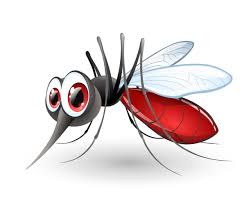
In Texas, mosquito bites pose a significant risk beyond mere hindrance. They are potential carriers of diseases that threaten you and your family’s health. Mosquitoes contract these diseases by feeding on infected animals, birds, or humans. Once infected, mosquitoes can pass on the infection to individuals through their bites, prolonging the spread of infection in our community.
1. Regarding bees, the MSDS states the chemical is toxic to bees with direct treatment on blooming crops & weeds. What is the impact to bees if the spray lands on homeowners plants and blooming flowers in their gardens/landscapes? i.e. roses, zinnias, wildflowers, cucumbers, or other home grown fruits & vegetables.
This product is toxic to bees, however, our applications are made between dusk and dawn when pollinators are not foraging. There will be a slight residual on plant material but should be insignificant to disrupt bee activity due to the ultra low volume (ULV) we are putting out also the product is breaking down to at least 15 microns.
When used in a properly calibrated ULV cold fogger machine, the droplet size will only impact the body weight of a mosquito and not the body weight of a bee. No impact will occur to bees when the product is applied at the correct droplet size, and at night, bees are not active in the evening.
Definition: Micron is a unit of measurement about one-millionth of a meter. As an example, a strand of hair is about 70 micron.
2. How long does the spray stay in the air before it dissipates?
This is Variable depending on weather conditions relative humidity and other factors. However, this Product and applications type is designed to be a knock down for flying insects. It should cover a desired 300 ft swath and settles to the ground in a few minutes
Definition: Swath is a strip of area coverage
3. What is the impact of the residue that lands on door handles, mailboxes, outdoor playlets, cars, etc. to kids and adult? How long does the chemical residue persist?
As stated before it does leave a residue, but it is minimal and should have no impact on any residents If a larger droplets did get through, it will rapidly degrade by UV light.
4. If a person were to touch an object(s) that had chemical residue, what sort of problems could it cause? If a kid or adult were to touch an object with residue and unknowingly touch their face or mouth what type of problems may occur?
In a concentrate form it could cause eye or skin irritation. We are making applications with a 6% Solution at 4.5 oz a minute driving at 10 mph so the amount of product that a single house could get is extremely small. This extremely small amount helps break the product down quicker.
5. How often is Cypress Creek audited to ensure proper storage of the chemicals?
Every Day
6. How often is Cypress Creek audited for proper mixing of the chemicals to spray in neighborhoods?
We are Audited by the TDA Biannually
7. If audited, when was the last audit? Have you ever failed an audit and if so when?
We were Audited last year, we have been cited for minor infractions mainly of a clerical type.
8. How far or what is the reach of the mosquito spray? Meaning, what is the distance of the spray’s coverage area from the truck. Trying to see if it can reach.
The machine is designed to put out a 300ft swath
9. With so much humidity in Houston does it make the spray contact last longer or does it make the spray weaker?
This should have no factor on efficacy as it is not a water-based product.
10. What is the main chemical ingredient in the spray?
Permethrin is an insecticide in the pyrethroid family. Pyrethroids are synthetic chemicals that act like natural extracts from the chrysanthemum flower. Permethrin is used in a number of ways to control insects. Products containing permethrin may be used in public health mosquito control programs. They may be used on food and feed crops, ornamental lawns, livestock and pets, structures and buildings, and clothing. Permethrin may also be used in places where food is handled, such as restaurants. Permethrin was first registered with the United States Environmental Protection Agency (U.S. EPA) in 1979 and was re-registered in 2006.
Fort Bend County
Fort Bend County currently uses EPA-approved mosquito control products MosquitoMist 1.5 ULV and Perm-X UL 4-4.
